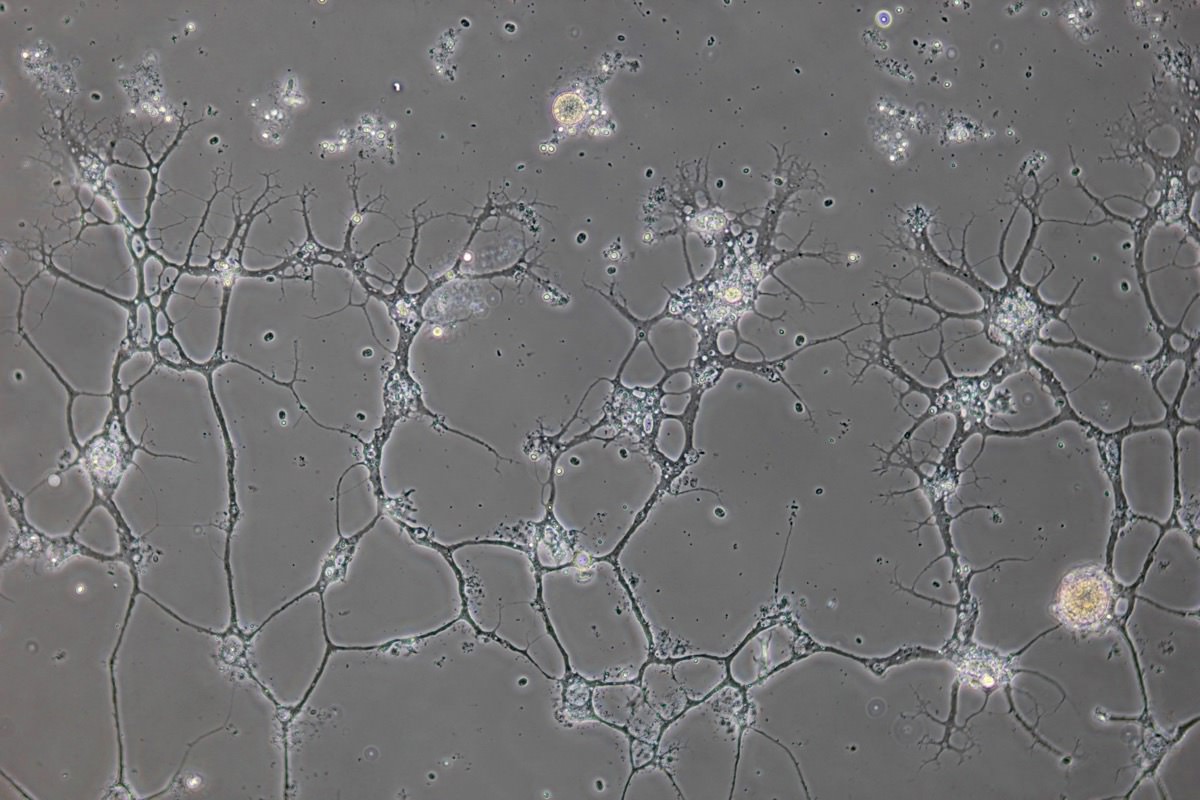Variosea Cavalier-Smith 2004, emend. Smirnov 2011
Aerobic ciliated amoebae with conical microtubular cytoskeleton and only temporary pointed pseudopodia or non-ciliated amoebae with long, tapering, usually pointed, often branched subspseudopodia.
Aerobic ciliated amoebae with conical microtubular cytoskeleton and only temporary pointed pseudopodia or non-ciliated amoebae with long, tapering, usually pointed, often branched subspseudopodia.
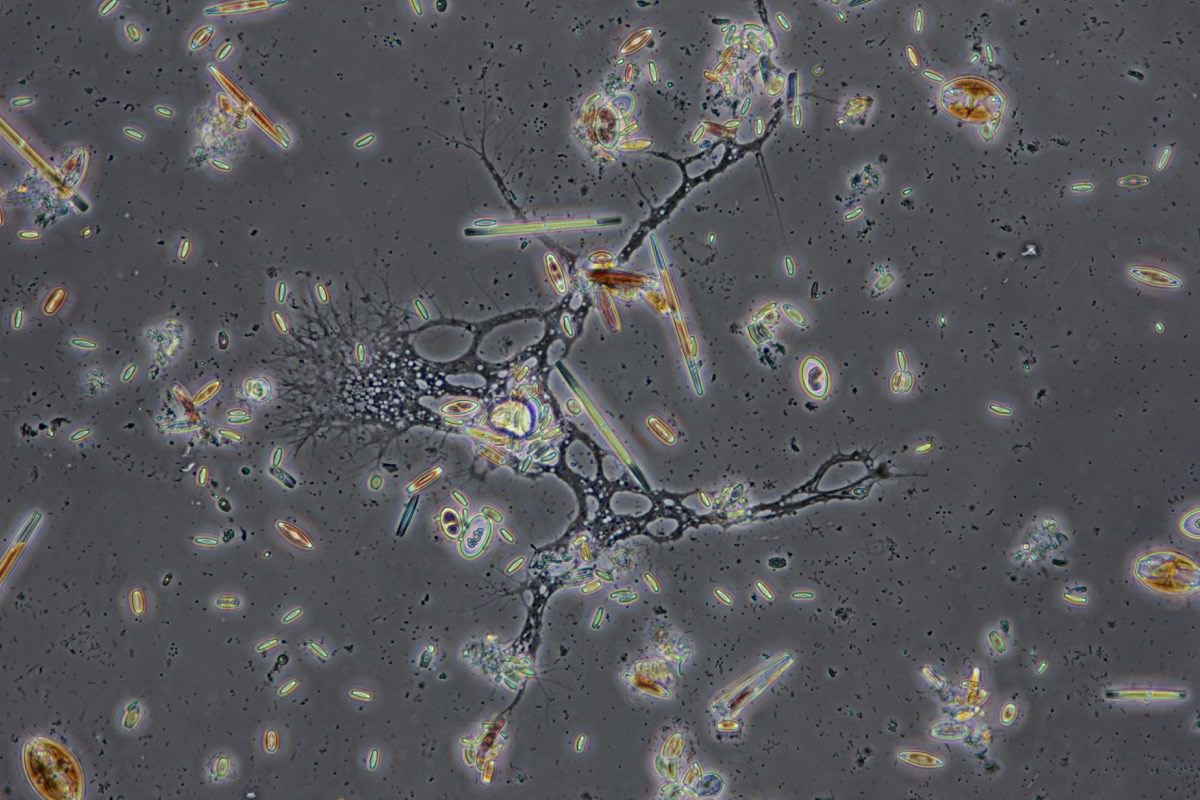
Often the movement of variosean amoebae is too slow to be seen in the microscope. This video shows a variosean with a 450 times speed increase.
1. Gracilipodida Lahr and Katz 2011
Amoeboid without cilium or centrosomes; flattened, fan-shaped or irregularly branched, with short conical subpseudopodia or fine hyaline hair-like subpseudopodia; cysts.
1.1. Telaepolella Lahr et al. 2012
Multi-nucleated freshwater naked amoeba with fine, sometimes branching pseudopodia and rapid cytoplasmic movement. Fan-shaped hyaloplasm with shorter pseudopodia and thinner, longer trailing pseudopodia during locomotion. Trumpet-shaped microtubular structures of unknown function distributed at varying angles throughout the cytoplasm and particularly near the periphery. Produces hyaline cysts.
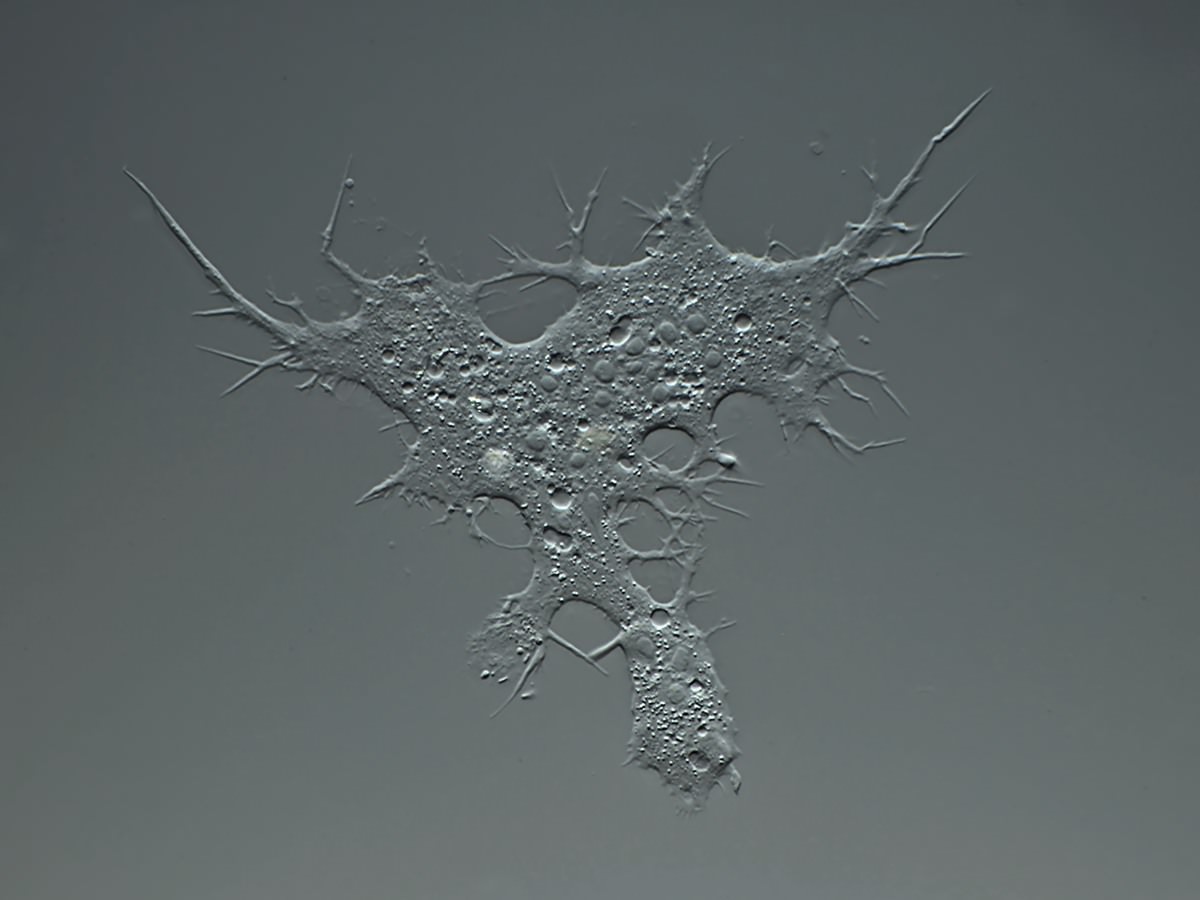
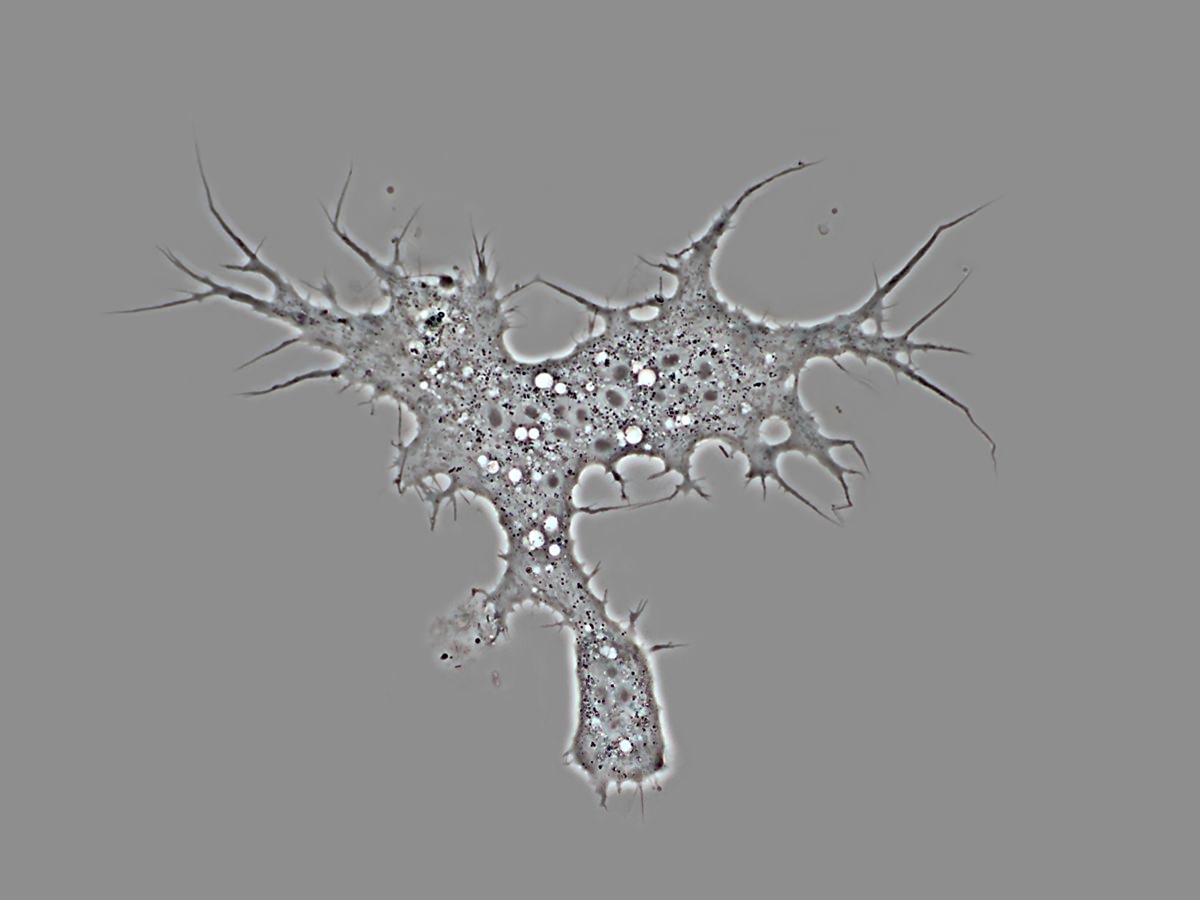
Telaepolella sp. Lahr et al. 2012
2. Heliamoeba Geisen, Bass and Berney 2015
Multi-nucleate, naked amoebae with filose-like pseudopodia. A clearly distinct cell body is always present, the pronounced pseudopodia making up most of the total cell dimension. Very rarely branching and if so only slightly, at edges of the cell body; never reticulate. Pseudopodia are often branching and present mostly in the anterior and posterior parts of fully extended cells, or all around the cell body in more condensed forms. When disturbed under a coverslip, cells often condense and eventually produce short, round, lobose-like extensions all around the cell body. Cell movement slow but observable under the microscope. Movement occurs with cell bodies narrowing at the posterior end and widening at the anterior end, where new pseudopodia are formed. Cysts of regular round shape.
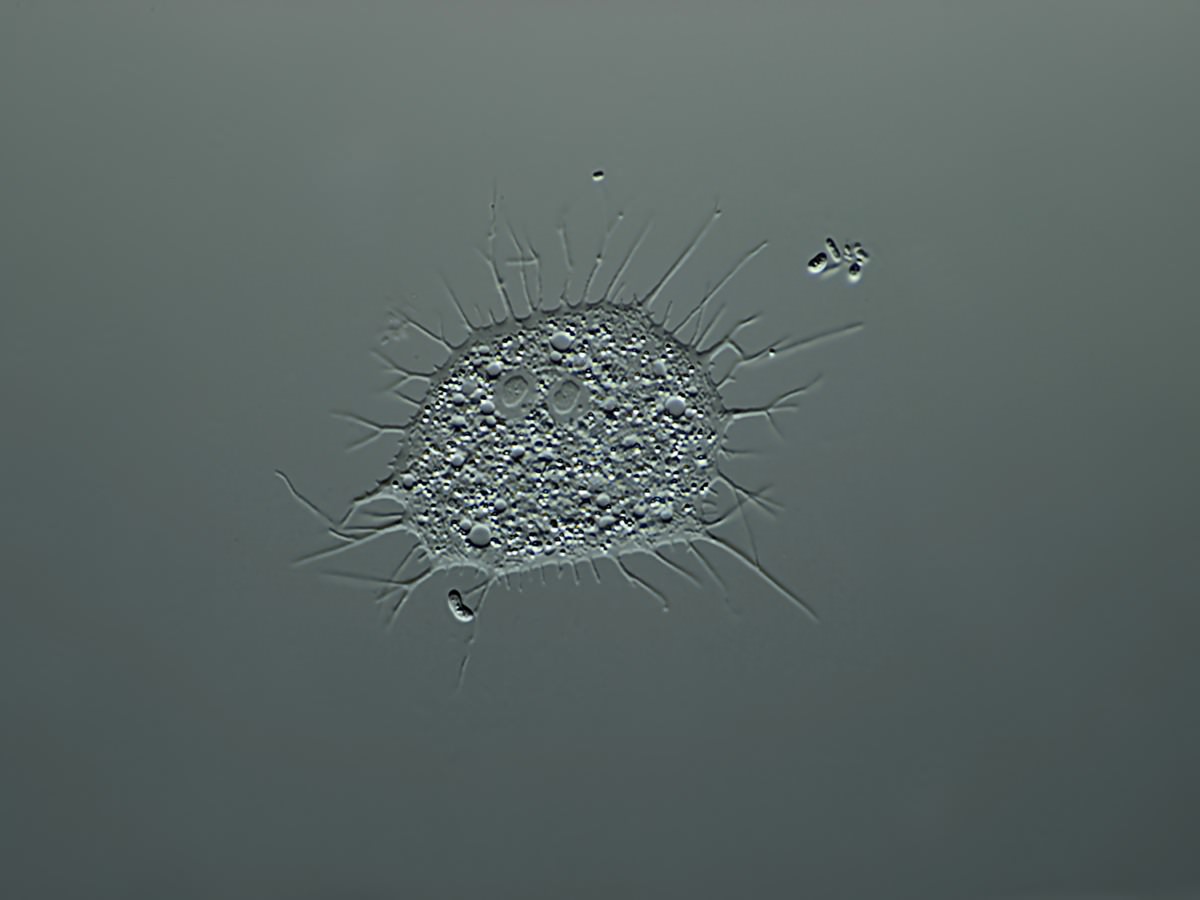
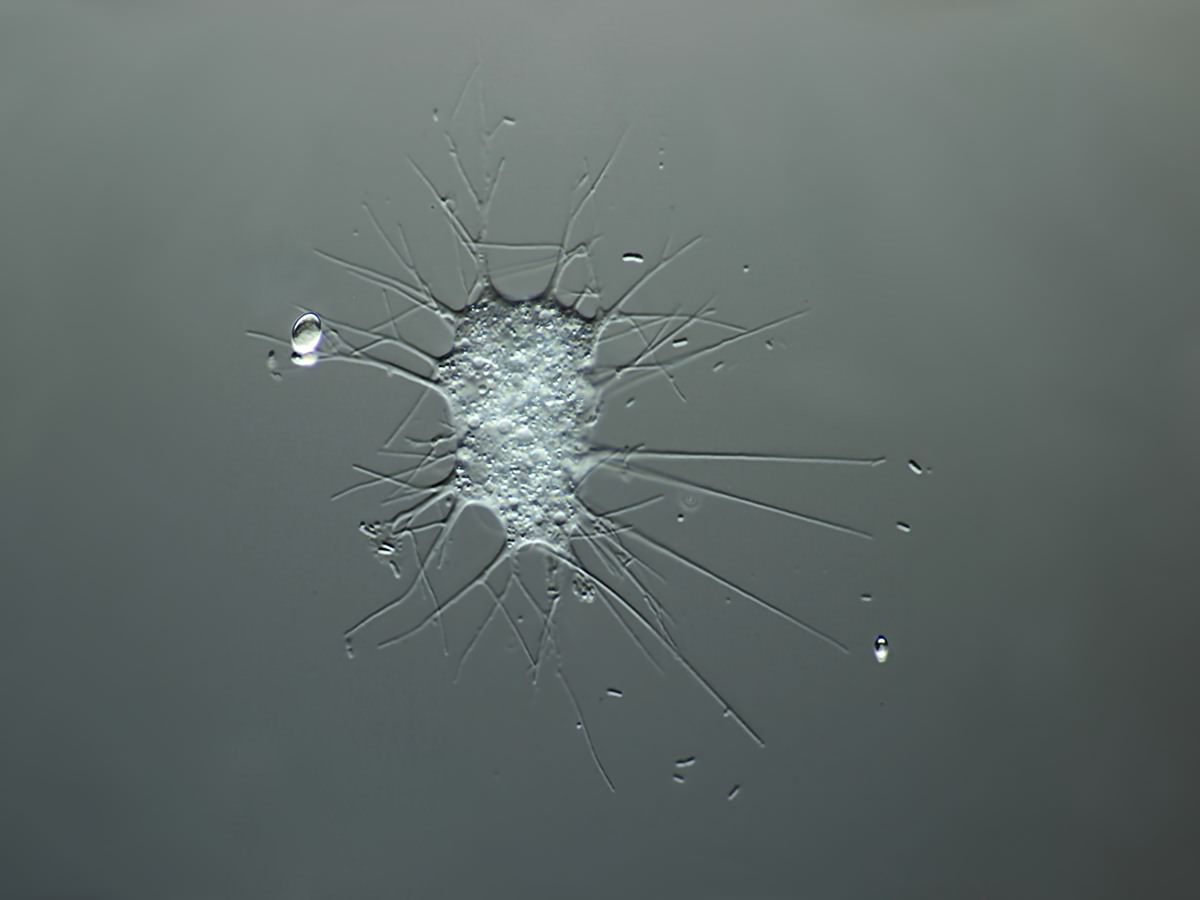
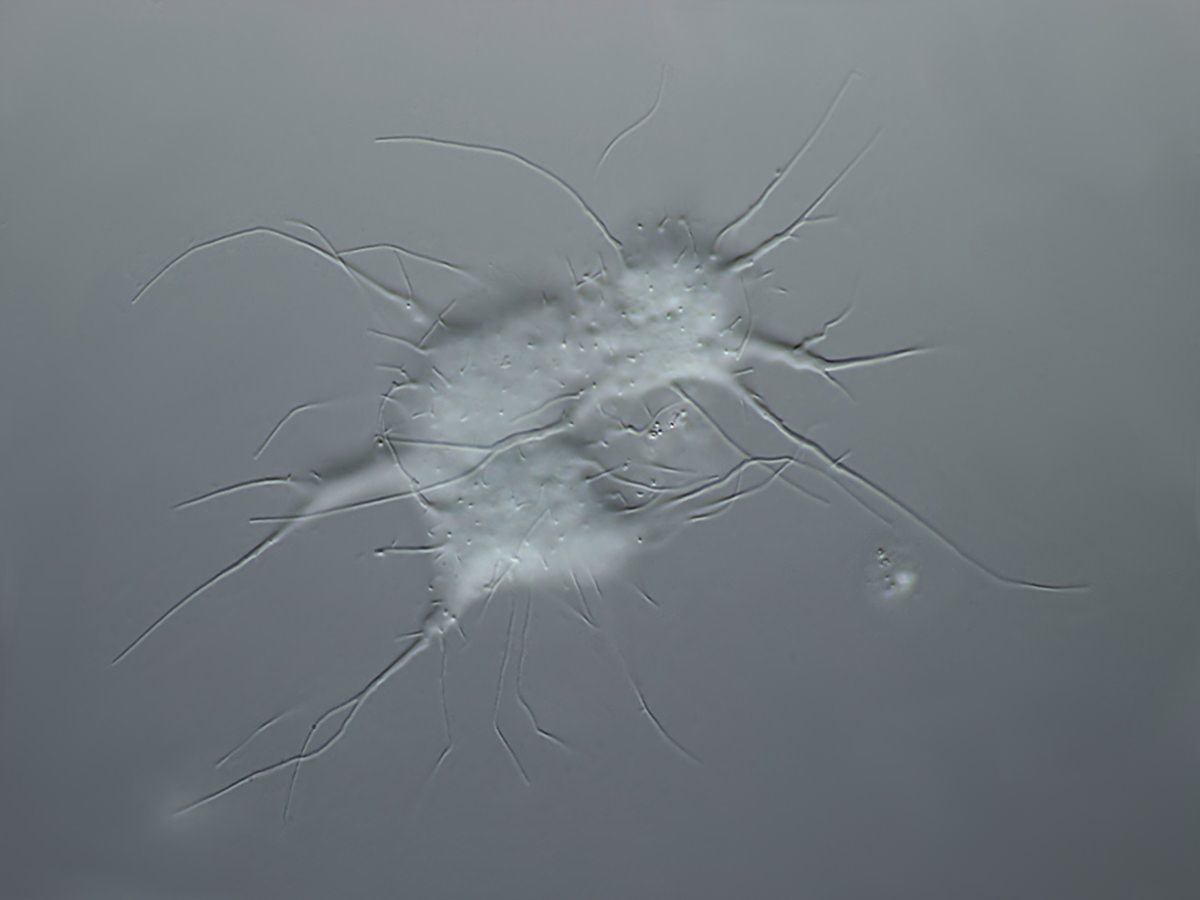
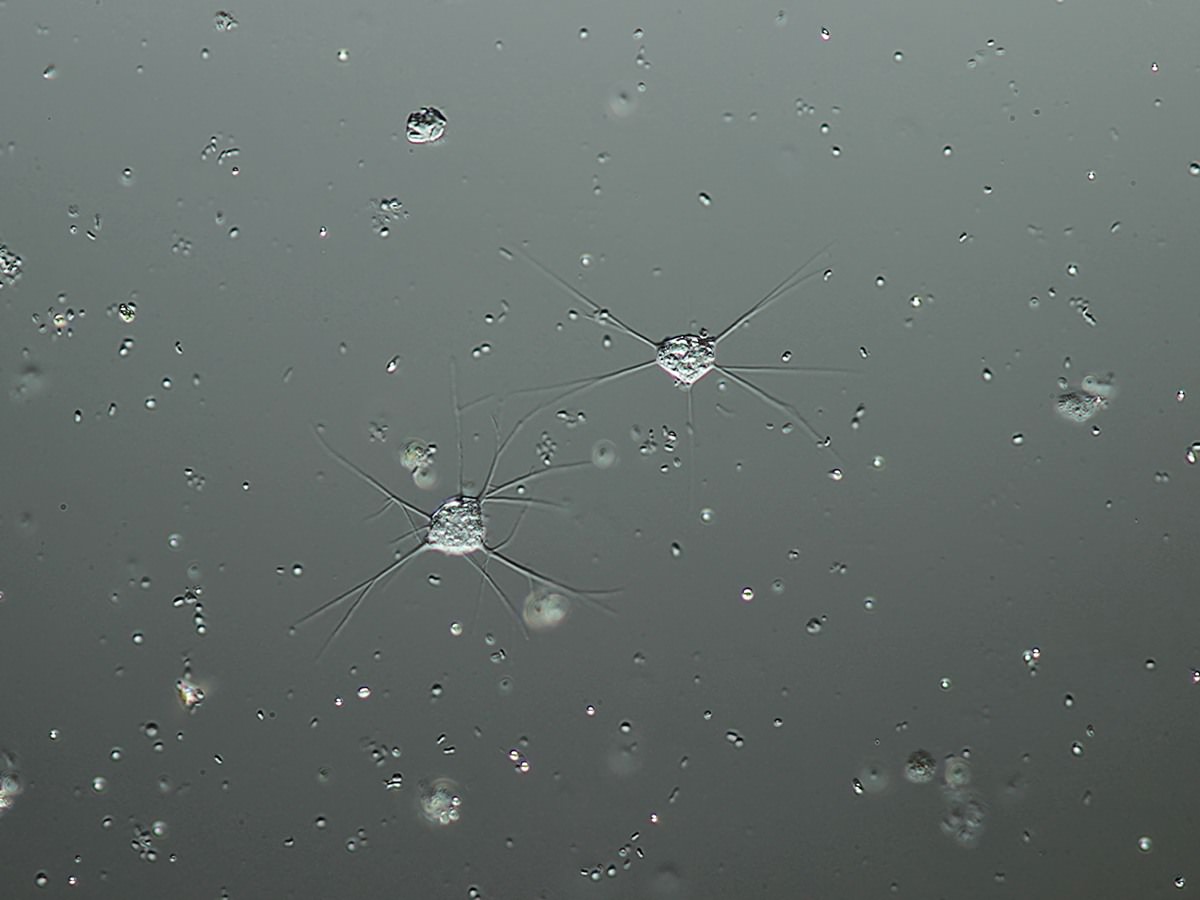
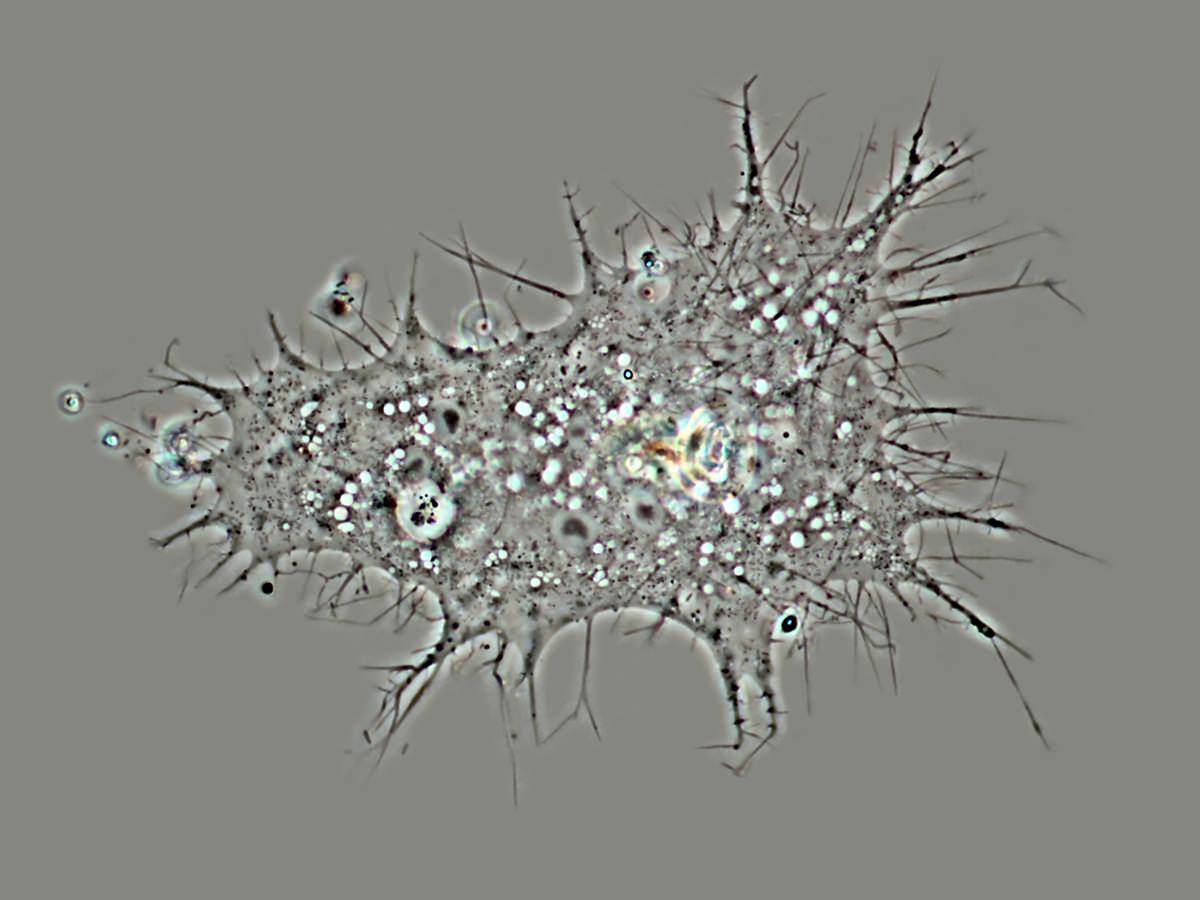
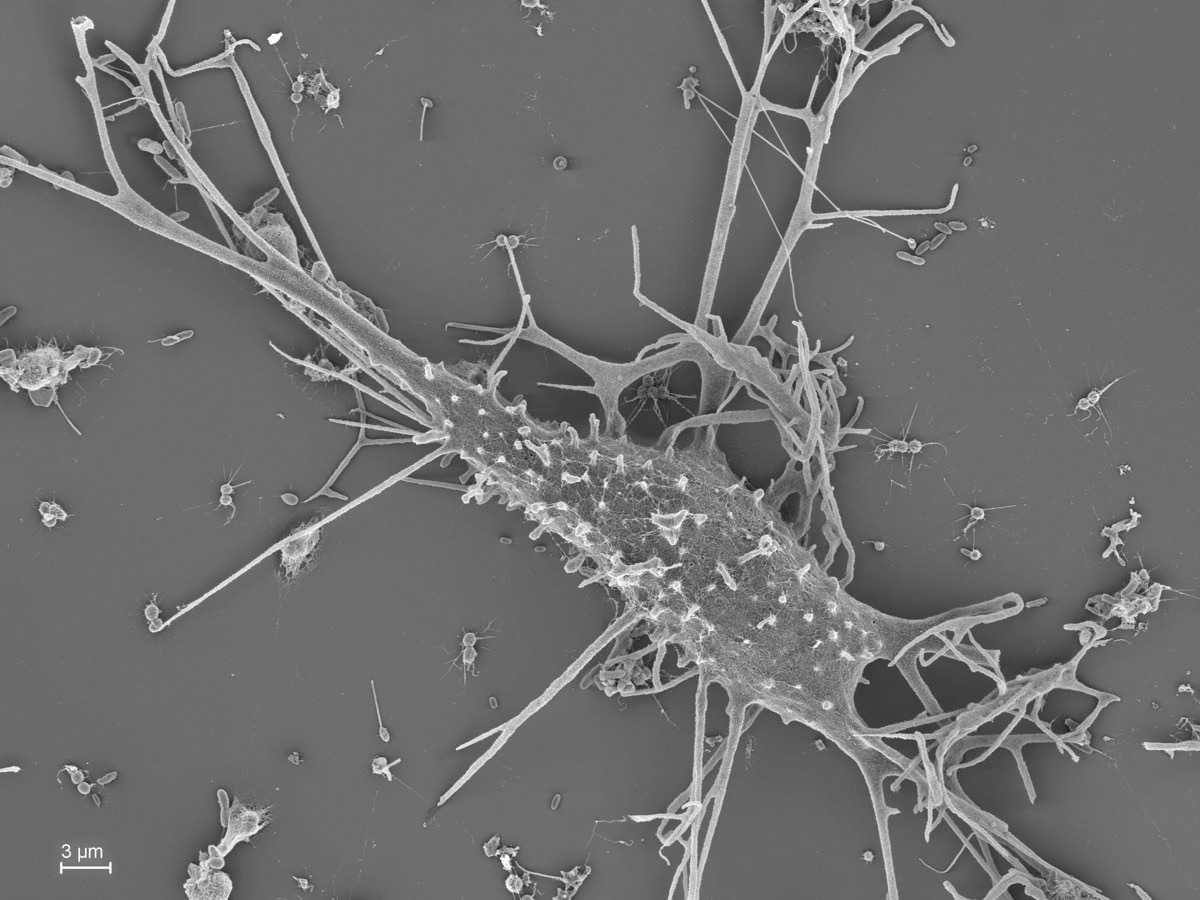
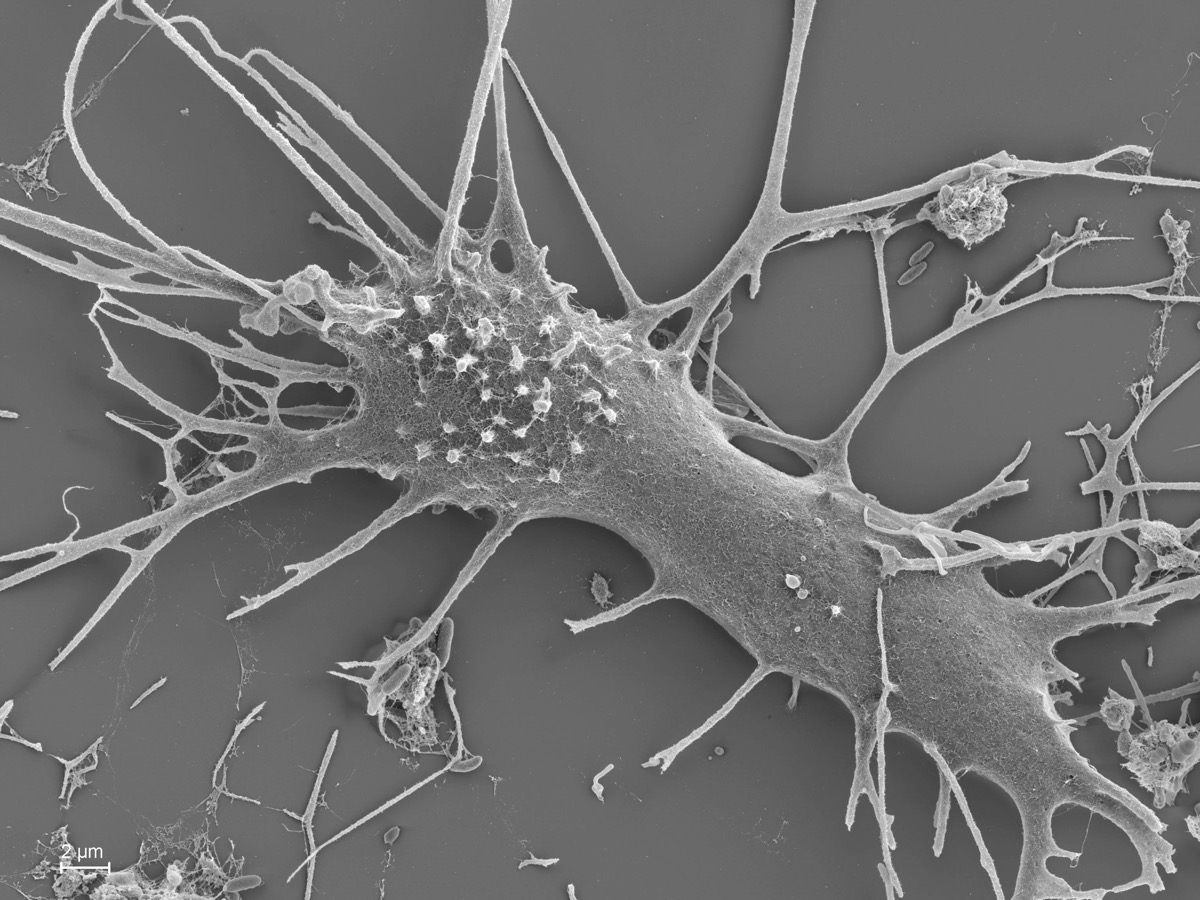
Heliamoeba sp.
3. Darbyshirella Berney, Bass & Geisen 2015
Multinucleate, highly branching and reticulate naked amoebae with slender, pointed, sometimes branched pseudopodia. The whole cell body is strongly branching and of narrow width, especially in the most extended parts, while more condensed parts are wider. Pseudopodia and branches are usually formed when cells condense in the anterior extending regions, resulting in up to three new branches. Posterior end usually pointed with no or few pseudopodia and no branching. Anastomoses occur randomly between branching parts of the cell body that come into contact, leading to networks of varying complexity. Very elongated amoebae are often less reticulate than more condensed ones. Many contractile vacuoles present in the entire cell. Movement of entire cells too slow to be directly observable. Cysts present, varying both in size and shape.
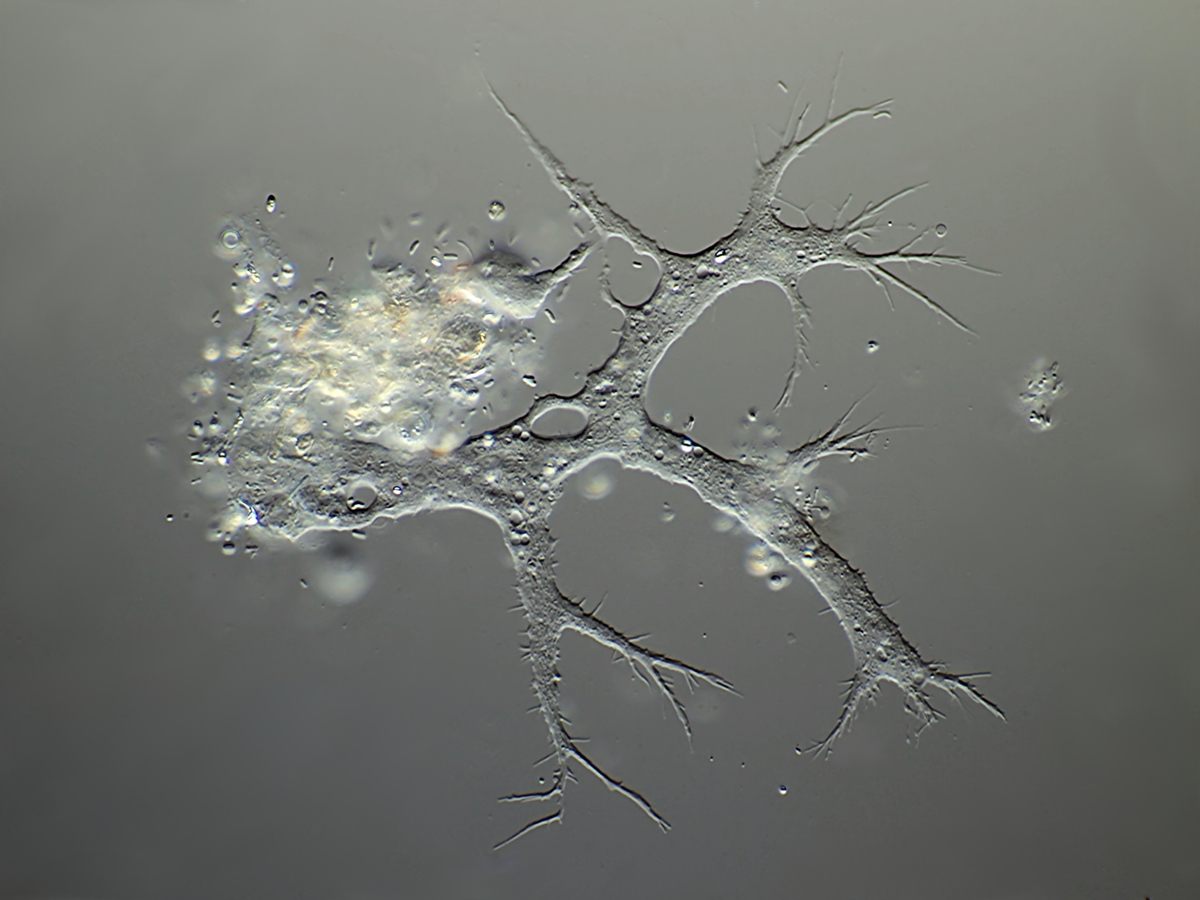
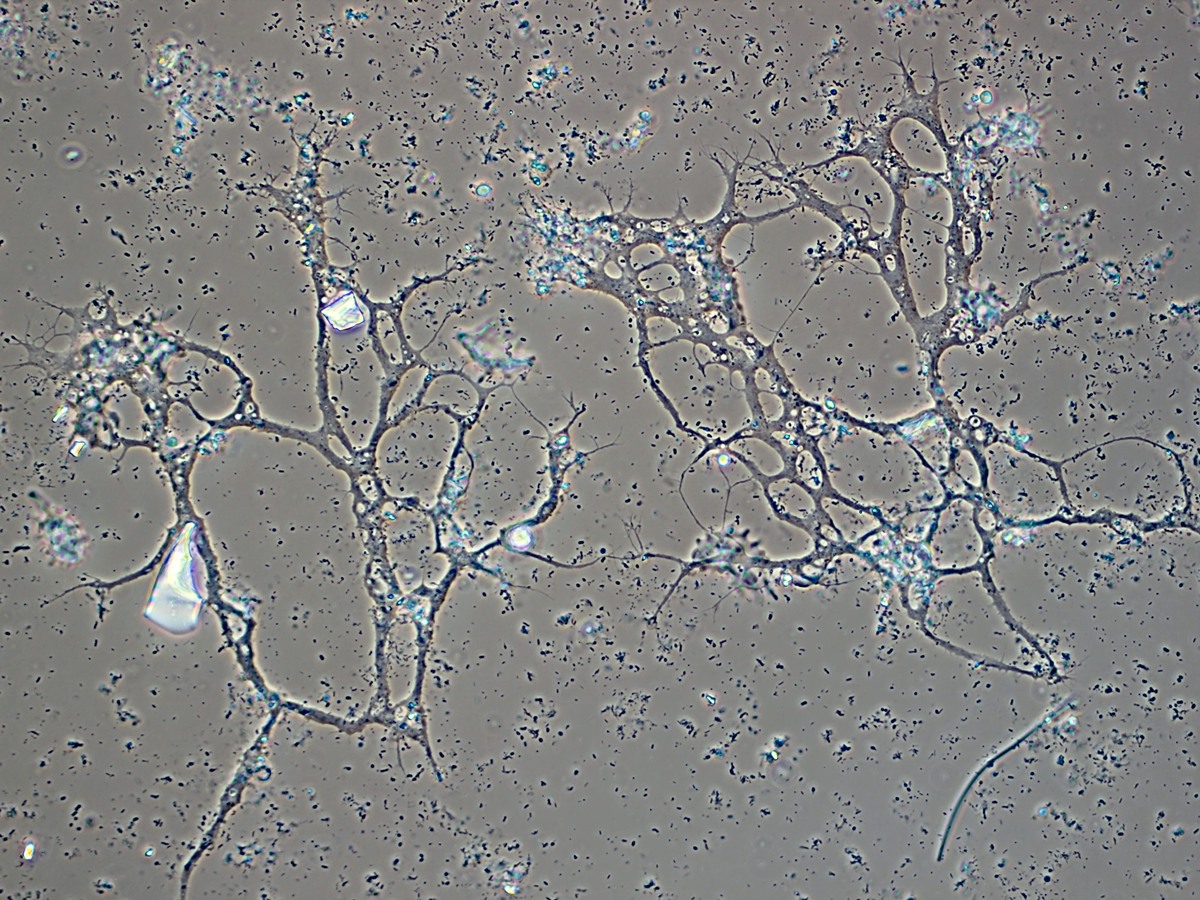
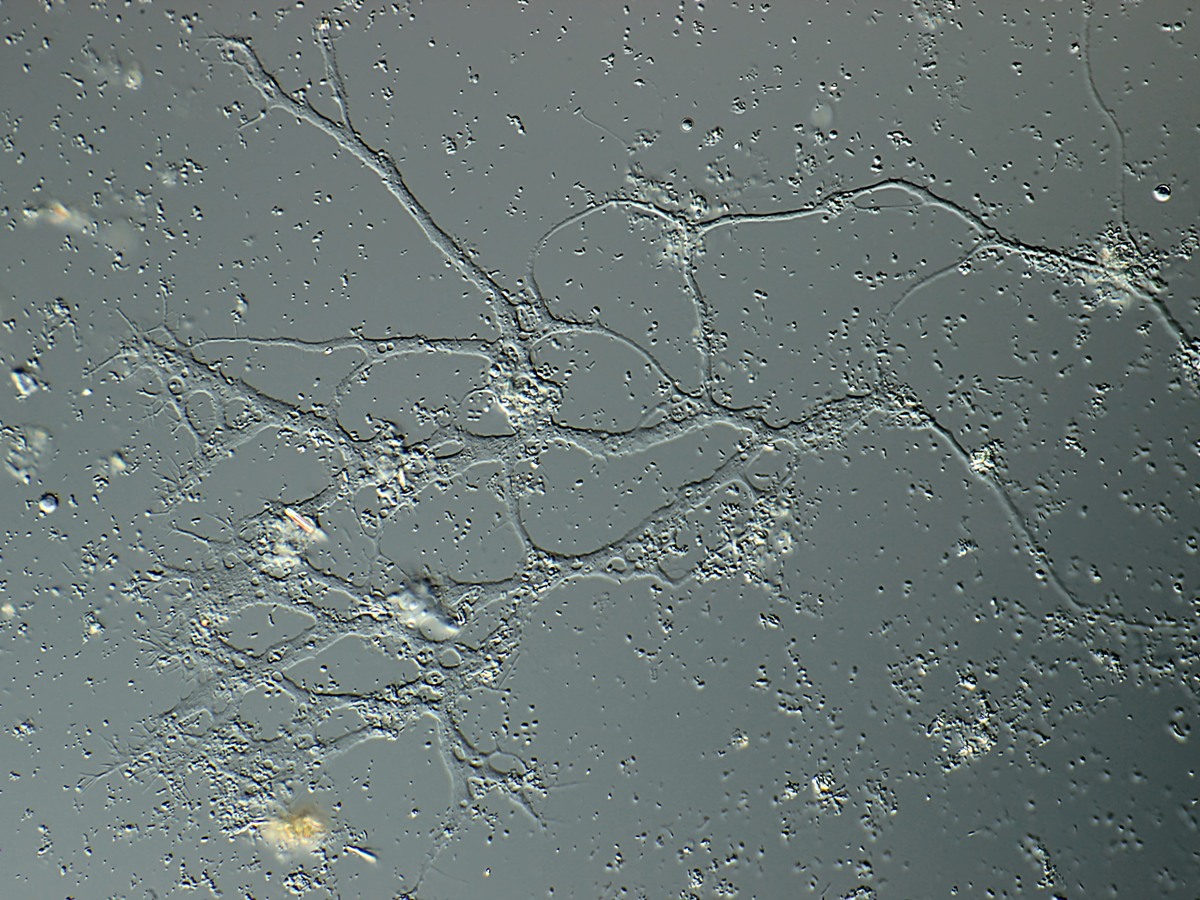
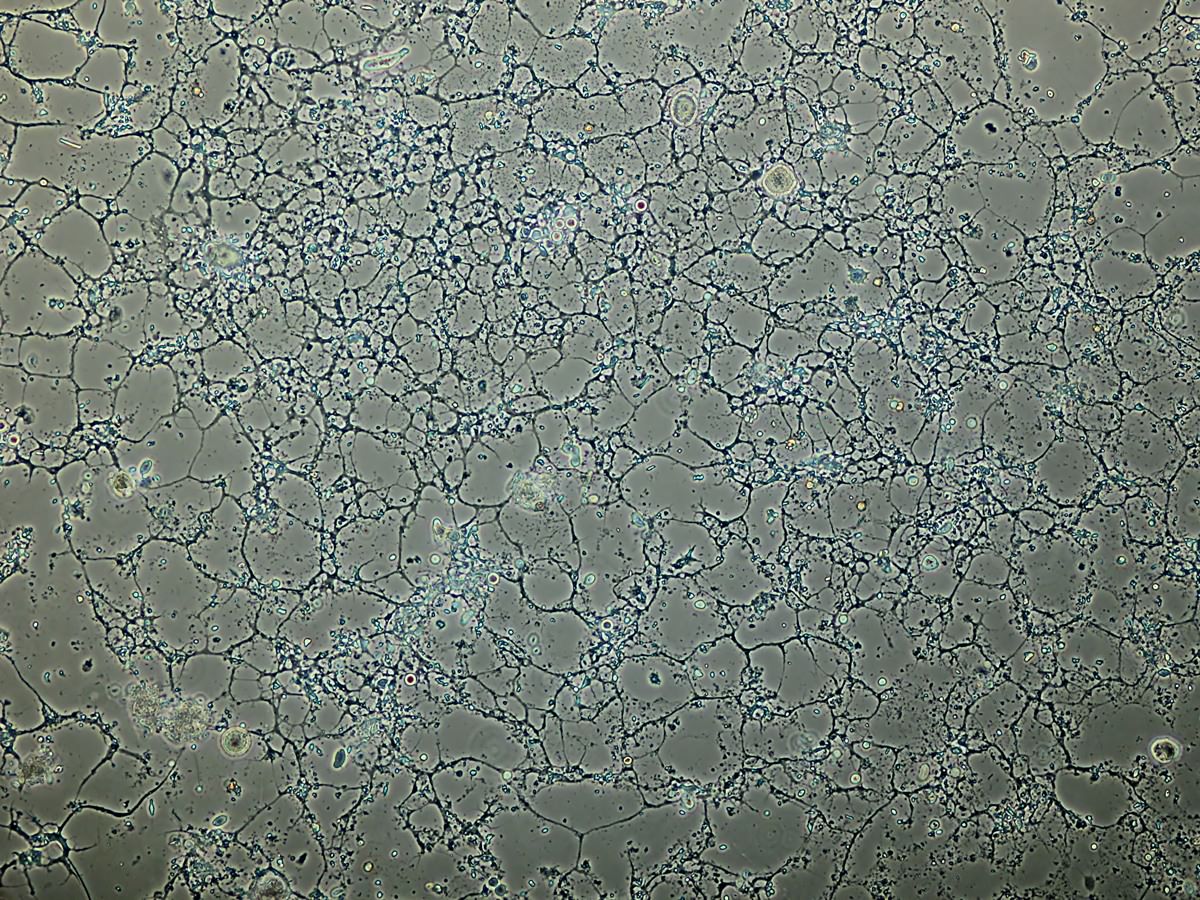
Darbyshirella sp.
4. Arboramoeba Geisen, Bass and Berney 2015
Multinucleate, highly branching and reticulate naked amoebae. Cell body not really distinct; nuclei and other cell contents are distributed across the whole network. The network is significantly more complex at the anterior front, forming a wide, very densely reticulate, non-permeable frontier where prey phagocytosis occurs, leaving behind a nearly sterile zone as the cell moves forward. The posterior part of the cells is much less reticulate and branching, with one or few non-branching, non-filose posterior endings. Branching, filose-like pseudopodia are mostly present at the anterior front of the cell, but can also be found in other parts of the network, regularly fusing with other parts of the cell. Very strong vacuolar activity across the whole network. Movement of entire cells too slow to be directly observable. Cysts with two clearly separate walls varying both in size and shape (never perfectly round, often ovoid).
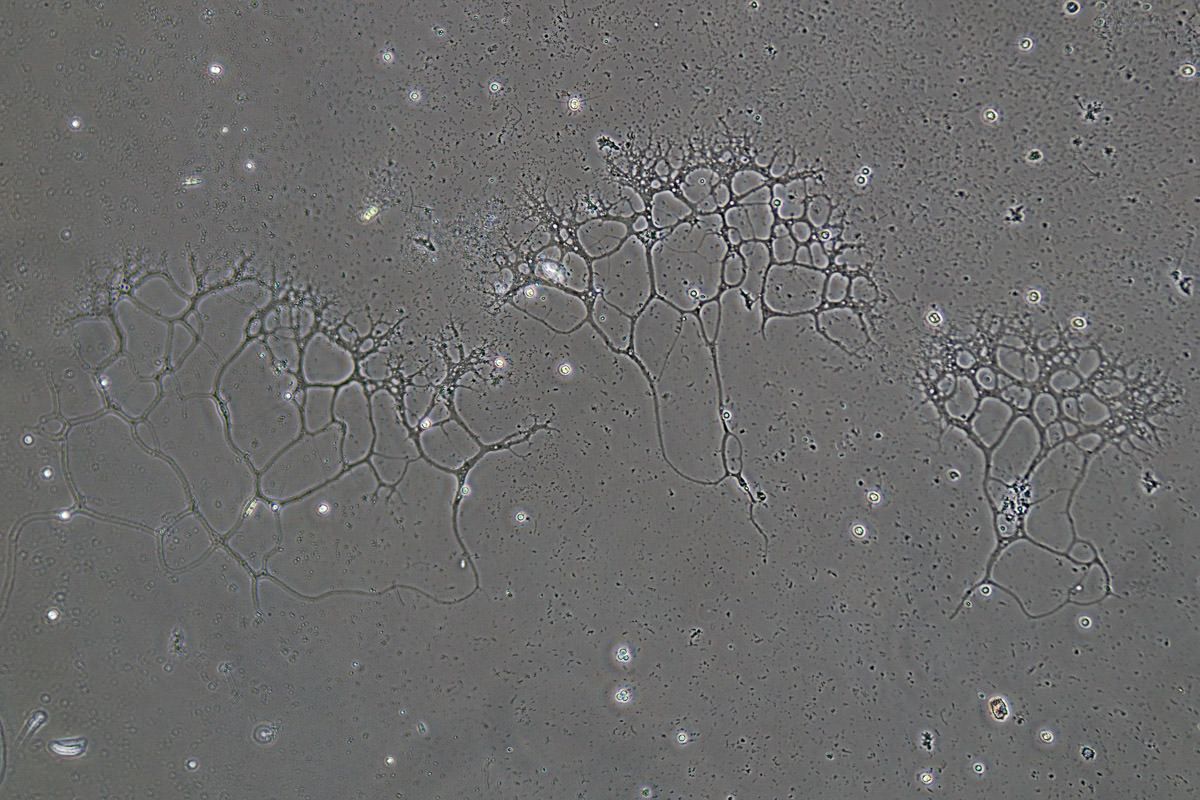
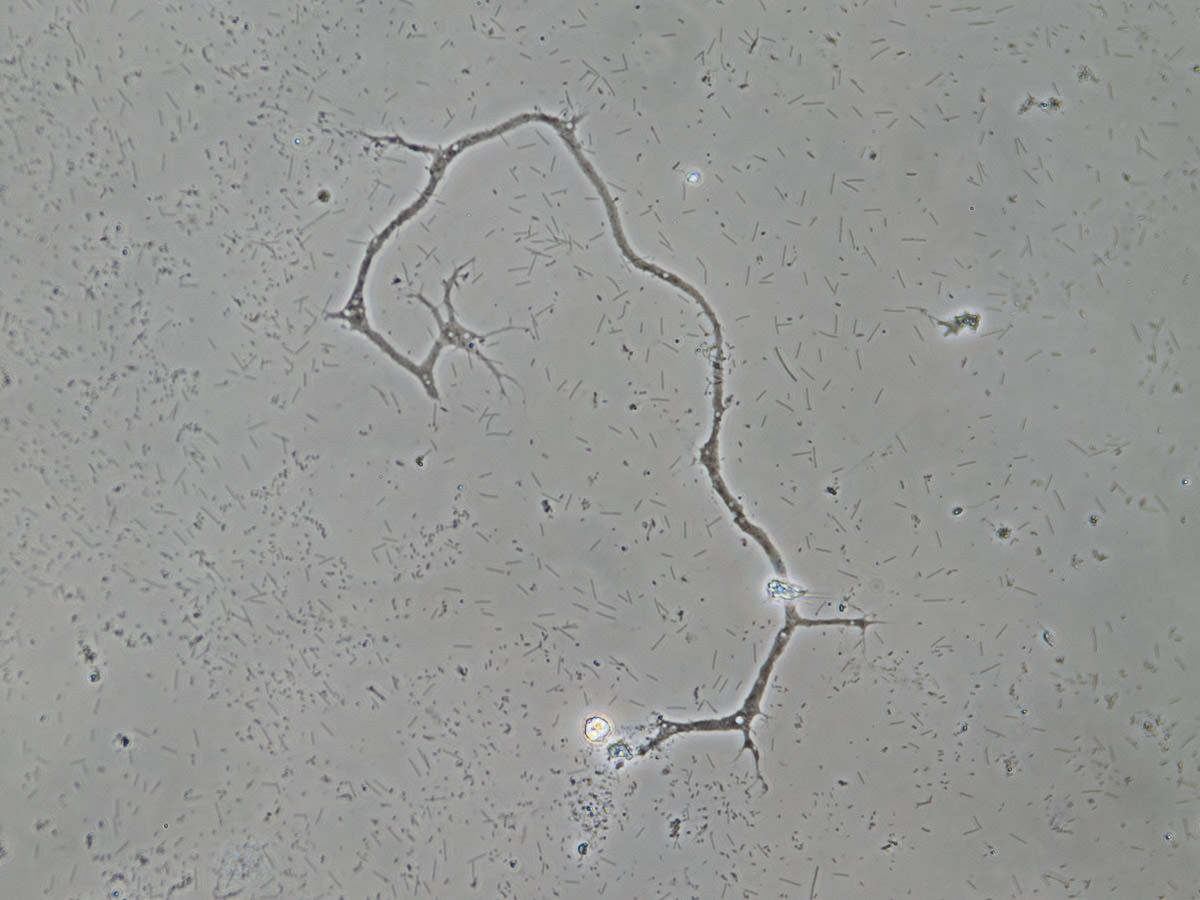
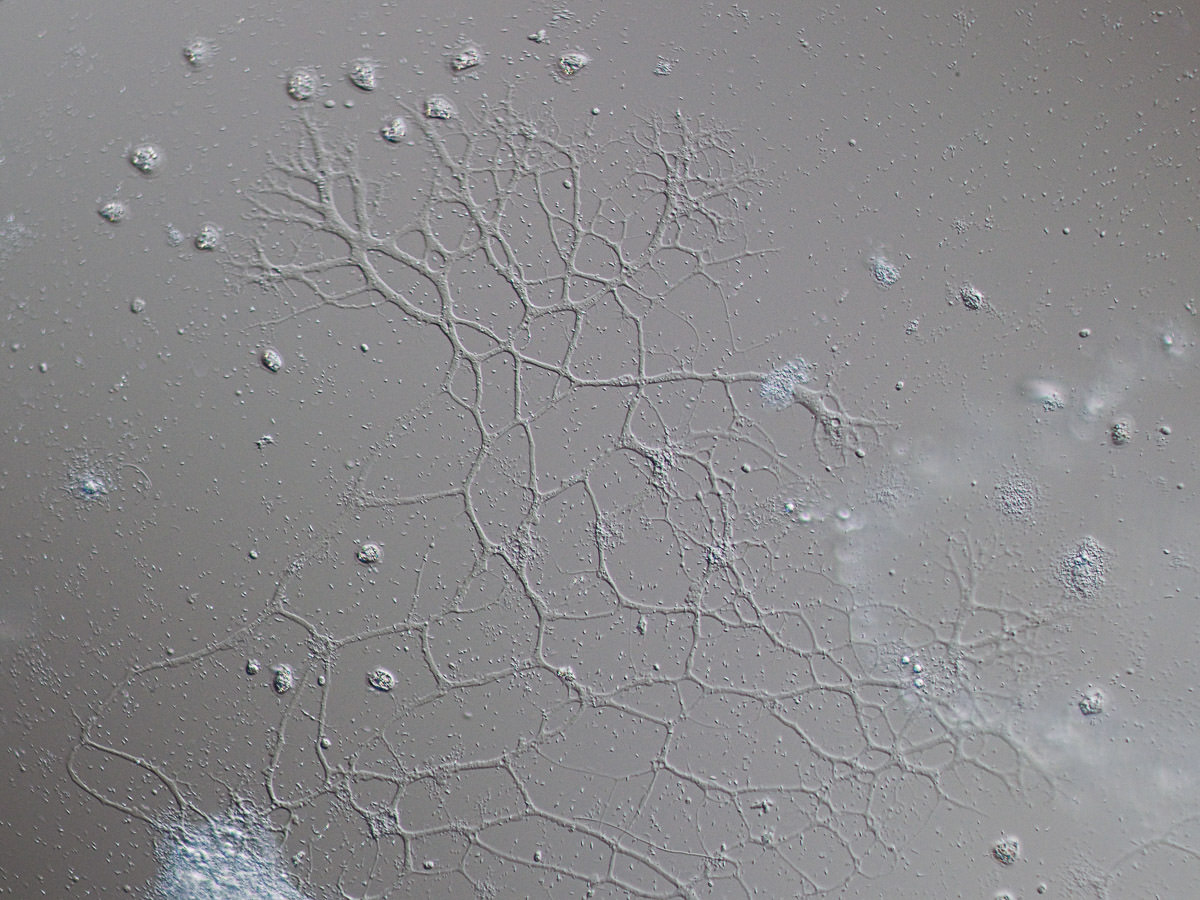
Arboramoeba reticulata Geisen, Bass and Berney 2015
5. Dictyamoeba Berney, Bass & Geisen 2015
Multinucleate, highly branching and reticulate naked amoebae with slender, pointed, sometimes branched pseudopodia. Trophozoites moving too slowly to be seen in light microscopy. The main cell body is multiply branched and anastomosing even in its simplest form, and can grow into gigantic networks (up to several mm) with intersecting segments of varying width and numerous terminal branching areas. Abundant fine pseudopodia are concentrated mostly at the extremity of lateral and terminal branches, especially in complex networks, but can be formed anywhere around the cell body in simpler forms. Numerous contractile vacuoles observed everywhere in the network, but more commonly at intersections of the main branches. Movement of entire cells too slow to be directly observable. Cysts of varying sizes and shapes, the simplest ones rounded, the larger ones irregular in shape.
